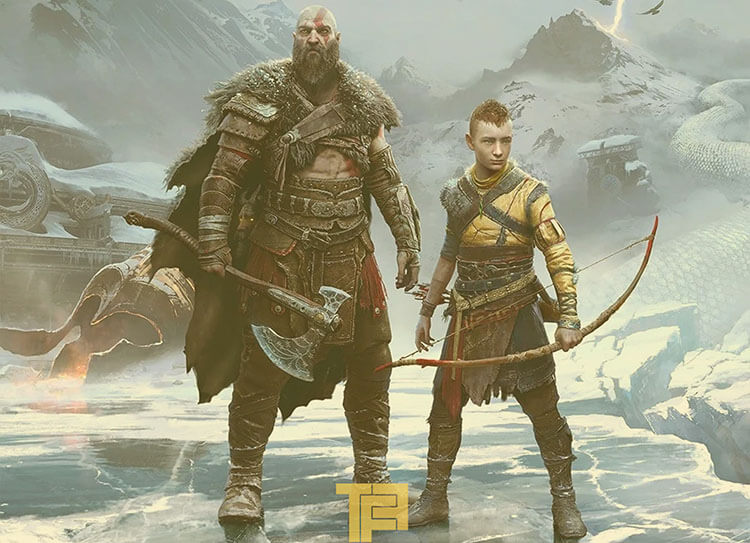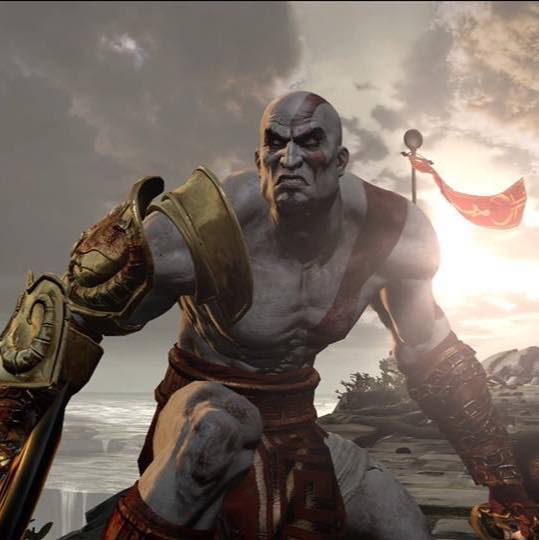The PlayStation classic God of War series is known for its harsh fighting and unique take on the Greek pantheon. But in the 2018 sequel, God of War, Kratos travels to Midgard and challenges the Norse gods. This, however, raises the issue of how Kratos arrived in Midgard and the Norse mythology of God of War. However, the answer to your query is Kratos has rowed a little boat all the way to Midgard.
The mechanisms of the God of War mythology

While previous games in the God of War series focused on Greek mythology, the most current game changed the emphasis to Norse mythology. Kratos caused the end of the world in God of War 3, but what transpired between then and the start of God of War 4 is mostly unknown to gamers (also confusingly called God of War). Evidently, the world has not ended, and Kratos has had sufficient time to forge a new existence.
According to Norse mythology, the planet was created when the ice from Niflheim and the fires from Muspelheim “Mixed” in the space between them called “Ginnungagap,” giving rise to the first giant to inhabit the earth, Ymir, with his sweat or whatever. Eventually, Odin and Thor joined forces to murder Ymir, using his body parts to build Earth (eyelashes/eyebrows as a wall encircling Midgard, skull for the sky, etc Now, when Kratos wreaked devastation in Greece (or in Greek mythology), he was exiled, and the developers claim, “He merely drifted NORTH for years.” The question is, how can it even make sense? To put it simply, he accidentally enters a realm inside a world, and now there are new gods to contend with.
When playing God of War: Ragnarok, how did Kratos get to the realm of Midgard?

During an interview, God of War series creative director Cory Barlog gave a few hints as to how Kratos arrived in the Norse realm.
Gods in the GoWverse do not function as galactic rulers. The Greek and Roman gods reigned over Greece and Rome, and the gods of other countries ruled over their countries.
Thus, in the GoWverse, there are several afterlives to which one may be sent based on one’s origin and the particular God or Gods that rule over one’s homeland, as well as numerous Gods of the Sea, some of which, I assume, have jurisdiction over some areas of the Ocean.
Leaving Greece and across Europe, Kratos eventually reached the kingdoms governed by the Norse Gods, and from there he sailed north to Scandanavia. Even though the worlds of Midgard and Kratos’ homeland share a planetary origin, the destruction in God of War 3 is only depicted in the immediate area of Athens and around Mount Olympus. Similarly, most mythologies don’t tell the story from a global perspective but rather from the local one of the people who wrote them.
In other words, all Kratos would have to do to meet the Egyptian Gods would be to visit Egypt, and all he would have to do to meet the Shinto Gods would be to visit Japan.
This makes things seem even less dramatic, yet the destruction of the Greek gods only resulted in the Apocalypse in Greece. Countries with their afterlives, sun gods, sea gods, etc., were not upended.
Connection between Mythologies

Tyr’s Bridge is the first place in the God of War games that will provide you with any kind of clue as to how Kratos arrived in Midgard. At least one hundred and fifty years, as Freya points out, the building was buried under the water. Assuming at least 150 years have elapsed by the time you reach it, the bridge is now usable as a thoroughfare through Alfheim.
In addition, Tyr’s Vault has a vase depicting Kratos. The vase’s presence suggests that Kratos’ reputation has persisted long enough to be handed down across myths and pantheons, or that Kratos has spent enough time in Midgard to create a new legendary persona for himself.
The vast quantities of water traversed by Kratos, Atreus, and Mimir are a notable aspect of the environment in God of War 2018. Since boats serve as the main mode of transit across several locations, the flood that began at the end of GoW3 undoubtedly affected every pantheon.
The presence of Kratos inside the Nine Realms, and his links to other realms, are evidence that the flood helped strengthen ties across the domains of different deities. Like a map, Kratos and Atreus find a sculpture of Tyr crossing between worlds, with symbols from other mythology strewn around in the engraving’s four corners.
Kratos’s knowledge of the Greek alphabet’s Omega sign is another evidence of the pantheons’ shared physical reality. Since this is possible, future God of War games may focus on myths and tales from nations other than Asgard after the events of God of War: Ragnarök.
Conclusion
Dark Horse Comics’ God of War: Fallen God comic series may also give some insight into Kratos’s voyage to this new realm, but I don’t want to spoil anything for you. Hope that you’ve got your answer & learner a few things or two from this article. Check out our other articles to solve various video game-related problems
